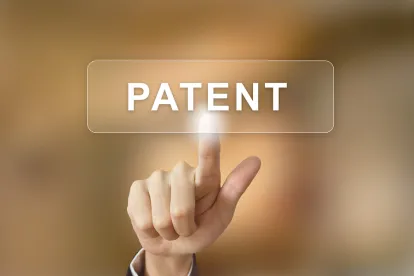On June 13, 2016, the United States Supreme Court issued a landmark decision that could affect patent owners’ ability to obtain enhanced damages (and correspondingly, accused infringers’ potential damages exposure) in patent cases. In Halo Electronics, Inc. v. Pulse Electronics, Inc., No. 14-1513, slip op. (U.S. June 13, 2016), the Supreme Court rejected the Federal Circuit’s standard for enhanced damages under 35 U.S.C. § 284 as inconsistent with the statutory language of that section.
Section 284 of the Patent Act provides that, in a case of infringement, courts “may increase the damages up to three times the amount found or assessed.” 35 U.S.C. § 284. The Federal Circuit previously adopted a two-part test that required a patent owner to first “show by clear and convincing evidence that the infringer acted despite an objectively high likelihood that its actions constituted infringement of a valid patent.” In re Seagate Technology, LLC, 497 F.3d 1360, 1371 (Fed. Cir. 2007) (en banc). Second, the patentee also had to demonstrate by clear and convincing evidence that the risk of infringement “was either known or so obvious that it should have been known to the accused infringer.” Id. Federal Circuit precedent further established a trifurcated standard of appellate review, wherein the objective recklessness determination was reviewed de novo, the subjective knowledge determination was reviewed for substantial evidence, and the ultimate decision whether to enhance damages was reviewed for abuse of discretion. See Bard Peripheral Vascular, Inc. v. W.L. Gore & Assocs., Inc., 682 F.3d 1003, 1005, 1008 (Fed. Cir. 2012).
Similar to its recent decision in Octane Fitness, LLC v. ICON Health & Fitness, Inc., 134 S. Ct. 1749 (2014), which overturned the Federal Circuit’s standard for shifting fees in exceptional cases under 35 U.S.C. § 285, the Supreme Court in Halo rejected the Federal Circuit’s two-part test for enhanced damages as “unduly rigid” and because it “impermissibly encumber[ed] the statutory grant of discretion to district courts.” Halo, No. 14-1513, slip op. at 9 (quoting Octane, 134 S. Ct. at 1755-56). According to the Court, “[t]he principal problem with Seagate’s two-part test is that it requires a finding of objective recklessness in every case before district courts may award enhanced damages.” Id. The Court found it untenable that “someone who plunders a patent—infringing it without any reason to suppose his conduct is arguably defensible—can nevertheless escape any comeuppance under § 284 solely on the strength of his attorney’s ingenuity” at trial. Id. at 10. “[C]ulpability,” explained the Court, “is generally measured against the knowledge of the actor at the time of the challenged conduct.” Id. And “Section 284 allows district courts to punish the full range of culpable behavior.” Id. at 11. Thus, under Halo, district courts may now exercise their discretion in deciding whether to enhance damages “free from the inelastic constraints of the Seagate test.” Id.
The Supreme Court also rejected the Federal Circuit’s adoption of the clear and convincing evidence standard. Halo, No. 14-1513, slip op. at 12. Relying again on Octane, the Court reasoned that “patent-infringement litigation has always been governed by a preponderance of the evidence standard” and held that “[e]nhanced damages are no exception.” Id. (quoting Octane, 134 S. Ct. at 1758).
The Supreme Court then rejected the “Federal Circuit’s tripartite framework for appellate review.” Halo, No. 14-1513, slip op. at 12. This time, the Court relied upon Highmark Inc. v. Allcare Health Management System, Inc., 134 S. Ct. 1744 (2014), which built on its Octane decision to “reject a similar mulipart standard of review.” Halo, No. 14-1513, slip op. at 12. Similar to its decision in Highmark, the Supreme Court concluded that § 284 “commits the determination whether enhanced damages are appropriate to the discretion of the district court and that decision is to be reviewed on appeal for abuse of discretion.” Id. at 12-13 (quoting Highmark, 134 S. Ct. at 1748).
Despite its clear rejection of the Federal Circuit’s standards relating to enhanced damages awards, the Supreme Court acknowledged that “[t]he Seagate test reflects, in many respects, a sound recognition that enhanced damages are generally appropriate under § 284 only in egregious cases.” Halo, No. 14-1513, slip op. at 9. The Court therefore repeatedly cautioned throughout its decision that “[a]wards of enhanced damages . . . are not to be meted out in a typical infringement case, but are instead designed as a ‘punitive’ or ‘vindictive’ sanction for egregious infringement behavior.” See, e.g., id. at 8-9 (“through nearly two centuries of discretionary awards and review by appellate tribunals, the channel of discretion has narrowed so that such damages are generally reserved for egregious cases of culpable behavior”).
This was also emphasized in a concurring opinion by Justices Breyer, Kennedy, and Alito, who wrote separately to express their views that: (i) “the Court’s references to ‘willful misconduct’ do not mean that a court may award enhanced damages simply because the evidence shows that the infringer knew about the patent and nothing more”; (ii) the Court’s ruling “does not weaken” the statutory rule that the “failure of an infringer to obtain the advice of counsel . . . may not be used to prove that the accused infringer willfully infringed”; (iii) “enhanced damages may not serve to compensate patentees for infringement related costs or litigation expenses”; and (iv) the Federal Circuit “may take advantage of its own experience and expertise in patent law” when reviewing enhanced damages awards “for an abuse of discretion.” Halo, No. 14-1513, slip op. at 1, 3, 5 (Breyer, J., concurring).
For companies accused of patent infringement, the Halo case will need to be factored in to assess the risks of, and potential exposure to, enhanced damages.






 />i
/>i
